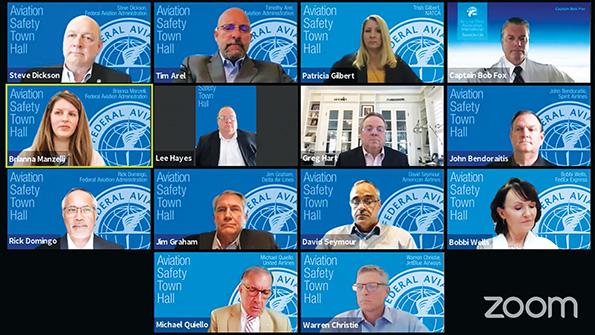Virtual Gatherings Must Still Deal With Reality

A modern workday includes countless virtual communications—emails, video conferences and meetings, text messaging, social media exchanges, you name it.
In today’s environment, the usually busy schedule of industry events has also become an adventure in remote connectivity. Online streaming services are recovering sponsorship and registration revenue lost by the inability to hold in-person gatherings. Trade associations are becoming adept at holding crisis-focused webinars and live-streaming sessions to enable and even stimulate member connection. The Aviation Week Network—no slacker when it comes to reinvention—is producing a slate of webinars that offers a regular venue for the industry to share and revisit predictions, advice, viewpoints and best practices.
The underlying goal of any communication—in-person, audio and visual recordings, streaming or otherwise delivered—is to provide value to a target audience. Adhering to this focus will ensure that the end-user, be it colleagues in the same company or an industry-wide audience, is properly served now and in the future.
An example of the need for improvement was on display May 14. After a week-long delay caused by technical difficulties, the FAA hosted a virtual “Aviation Safety Town Hall.” Originally, ARSA’s notice about the event included the promise of an exchange with invited panelists. For reasons unknown, when the association’s executive director was informed (48 hr. in advance) that the event would be live-streamed on the agency’s YouTube channel, there were no engagement instructions of any kind.
The session included two panels moderated by Administrator Steve Dickson and Flight Standards Executive Director Rick Domingo. At its most condensed, the video screen packed in 14 faces: Dickson and Domingo, supported by FAA Assistant Administrator for Communications Brianna Manzelli, were joined by senior executives from air carriers and trade unions including Delta Air Lines, United Airlines and American Airlines as well as the National Air Traffic Controllers Association and the Air Line Pilots Association.
The exchanges were pleasant and generally positive, packed with praise for collaboration and responsiveness from both industry and the government, affirmations (and reaffirmations) of the value of safety management systems and promises to “stick with what we know” in both crisis management and the eventual return to “normal operation.” It was a demonstration of intra-industry back-patting about quick action and coordination and the work being done to protect crewmember health and passenger safety.
But who was this supposed to help, advise or encourage? In other words, who or what was the target audience?
There were no media advisories or broad public announcements drawing attention to the session. Only those who already carefully watch FAA communications—or ARSA.org—were even aware of the event. There was no clear agenda or information on content or context. The approach and discussion were too technical and obscure to hearten a nervous flyer. Nor were there any specifics regarding compliance obligations or operational issues that could help a curious certificate holder.
None of the information provided generated broader coverage or discussion. An internet search for “FAA Aviation Safety Town Hall” finds nothing from the usually attentive aviation industry trade press. During the event, Manzelli befuddlingly reminded “media viewers” that all discussions were “on background,” a standard phrase meant to prevent reporters from ascribing statements to particular speakers. We appreciate the agency’s use of remote technology, but its effort was all virtual and not much reality. Remote connectivity must ultimately ensure that user involvement at least approximates an in-person, on-premises experience. This standard—replicating direct personal experience—will sound familiar to anyone who has followed the industry’s broader effort to institute reasonable remote connectivity policy. With care and attention, it can be achieved in a maintenance facility or on a flight line.
On the same day as the FAA event, ARSA Executive Director Sarah MacLeod and I participated in a webinar hosted by our colleagues at Helicopter Association International. Similar to Aviation Week’s and other industry offerings, these sessions are readily available to the public, their purpose and participants are known and registration is straightforward. In preparation, the production team provided regular updates to help us keep our presentations relevant. We delivered our session materials early, ran through the technology and prepared to take questions and interact with participants.
The “new” normal demands that the aviation industry and the FAA become capable of using virtual reality, particularly since it is neither new nor virtual. It is a method of communicating that can be the same and in some cases even better (one cannot attend an industry meeting in flip-flops) than an in-person, on-premises experience.
—Brett Levanto is vice president of operations with Obadal, Filler, MacLeod & Klein


